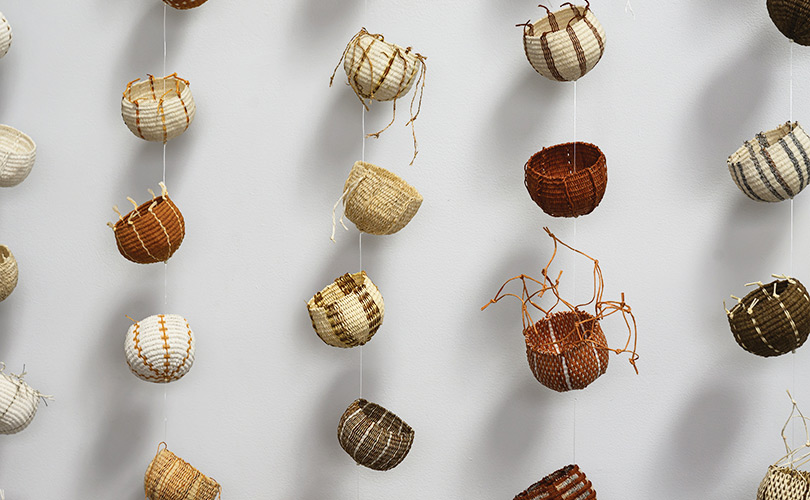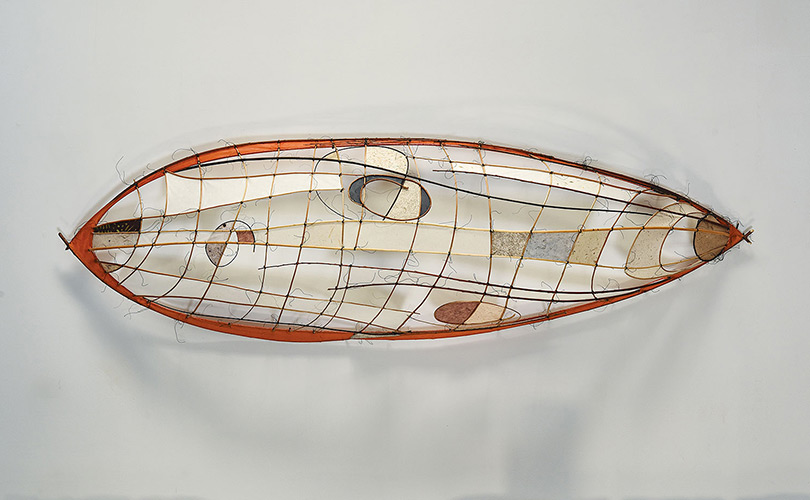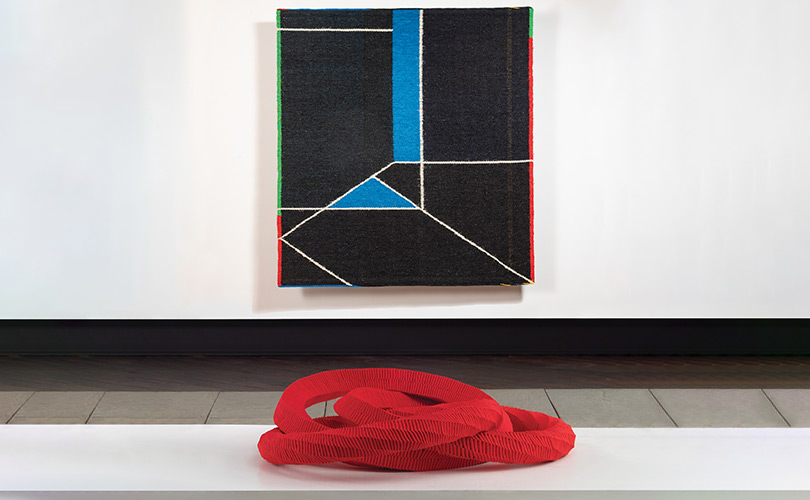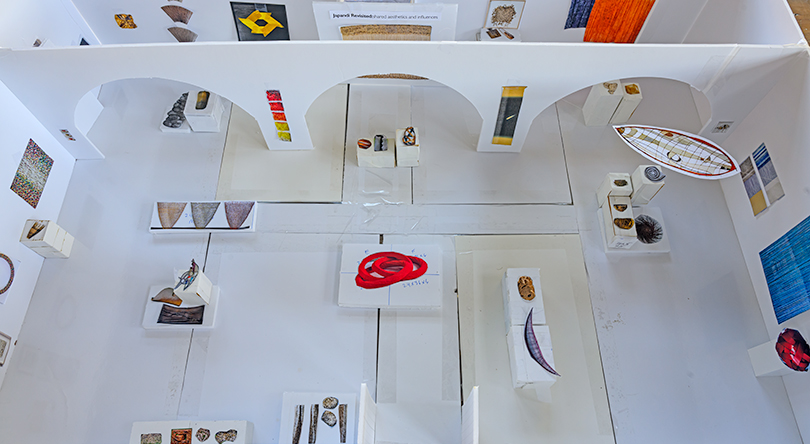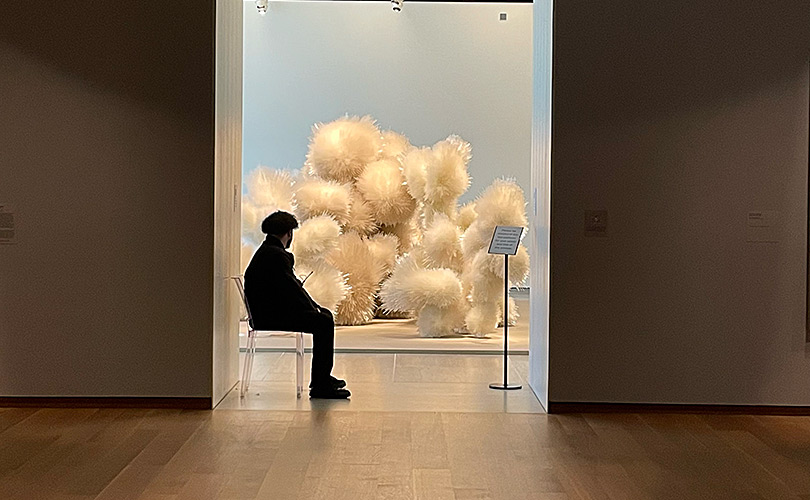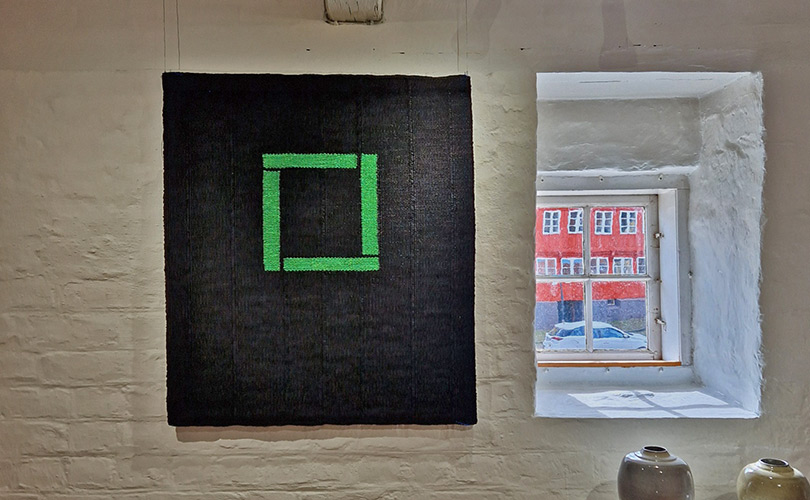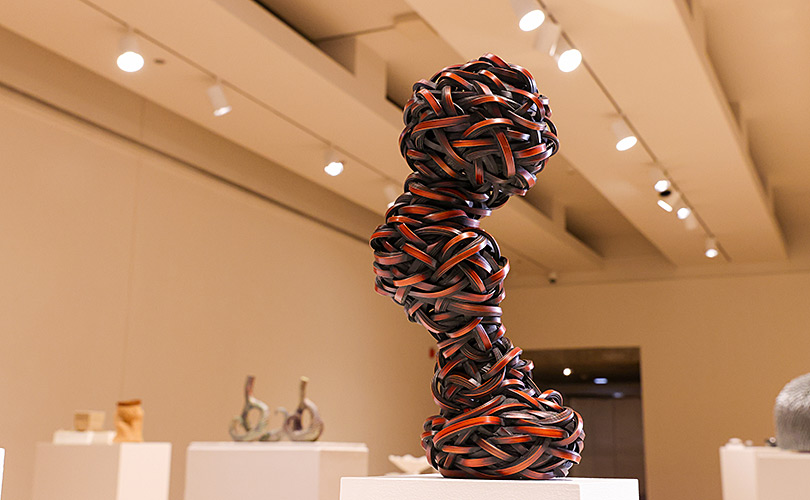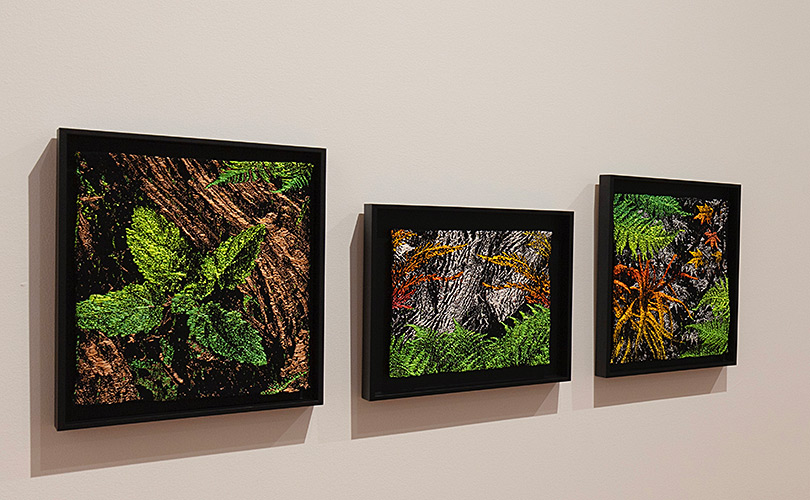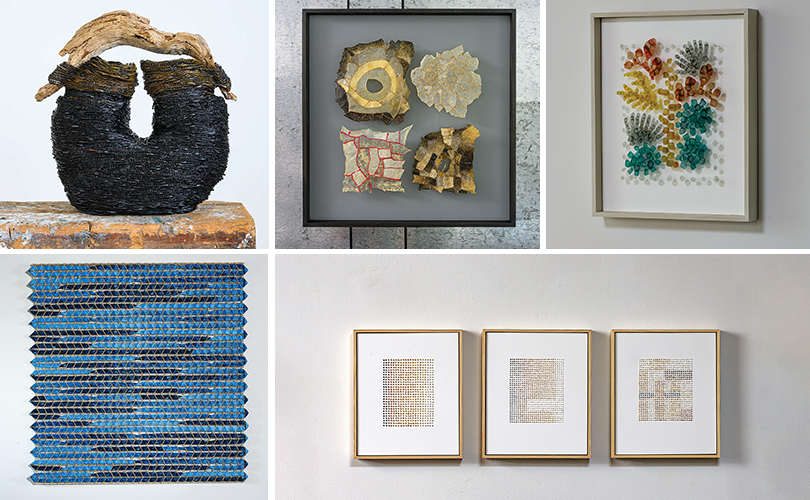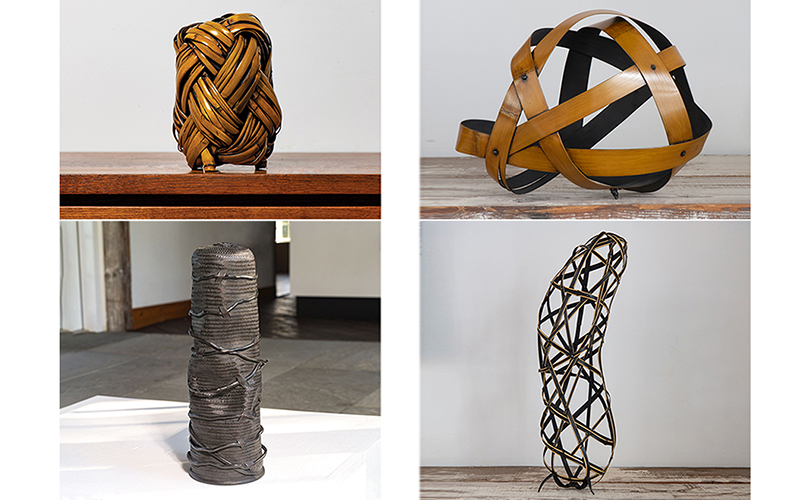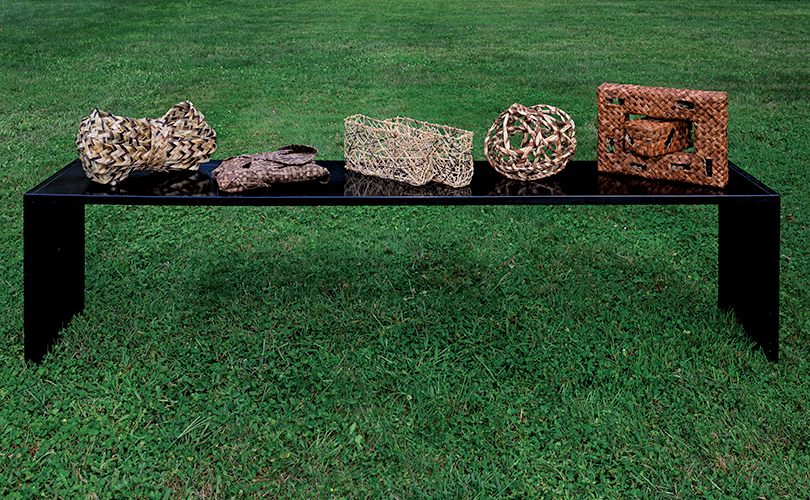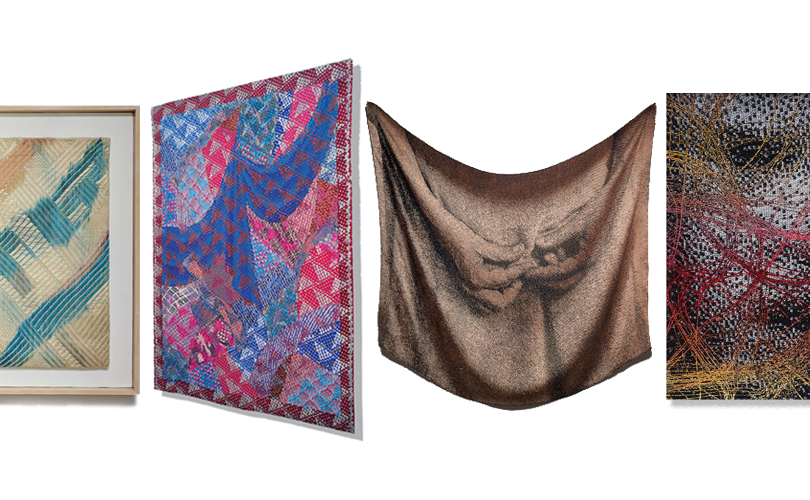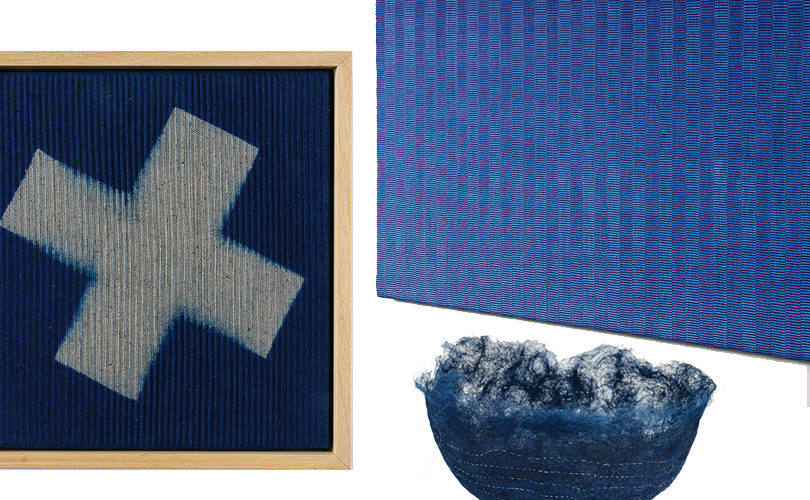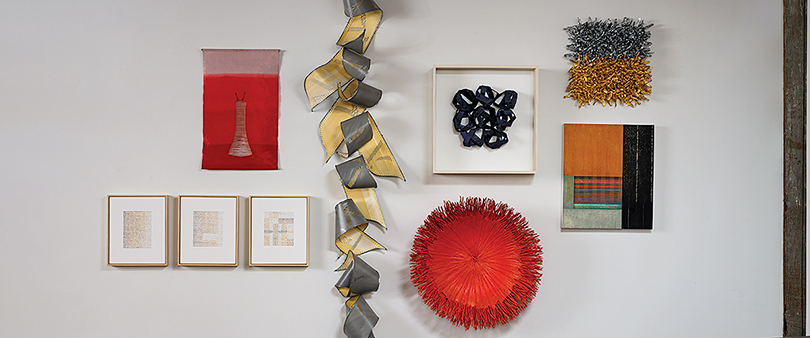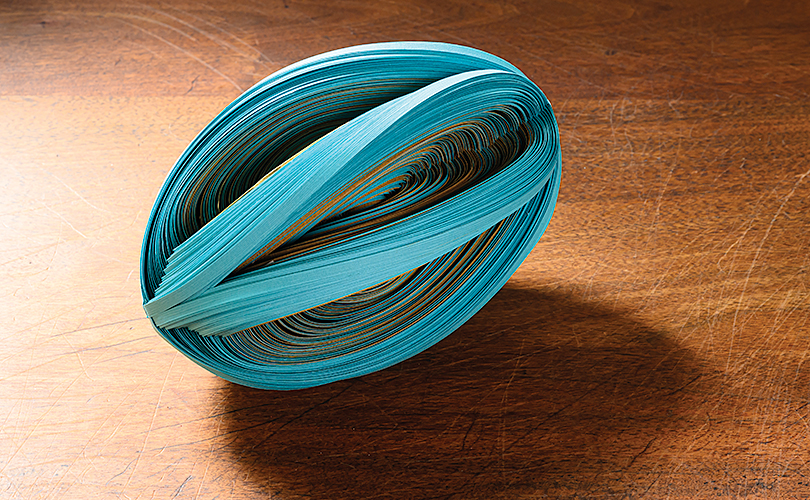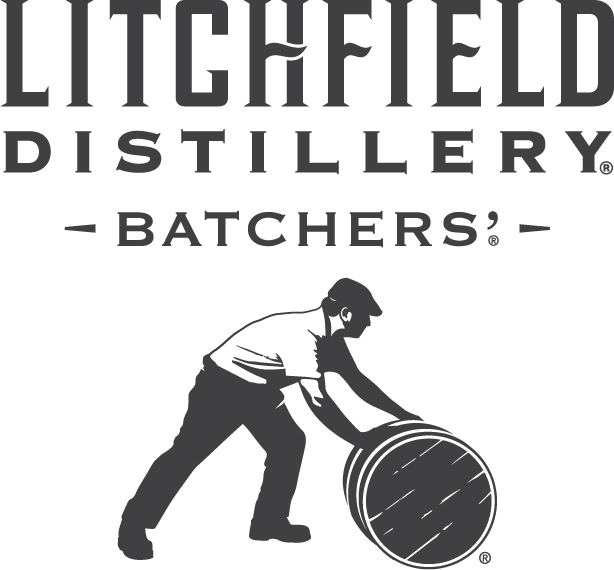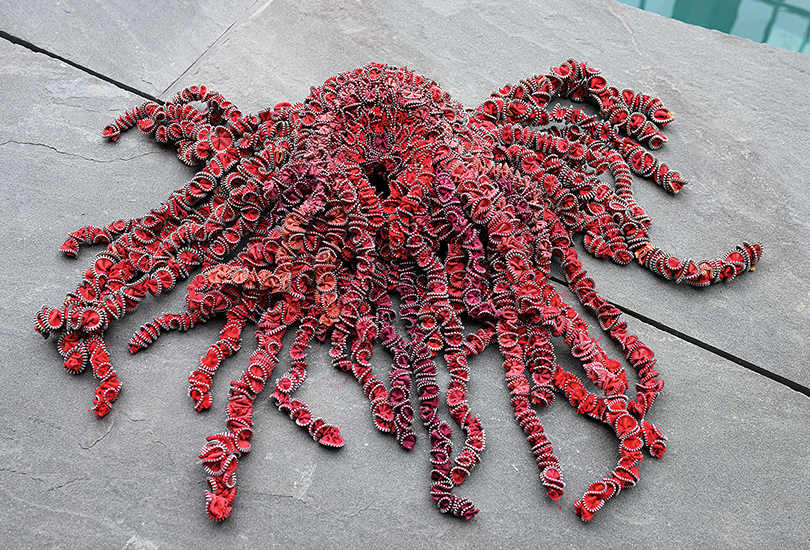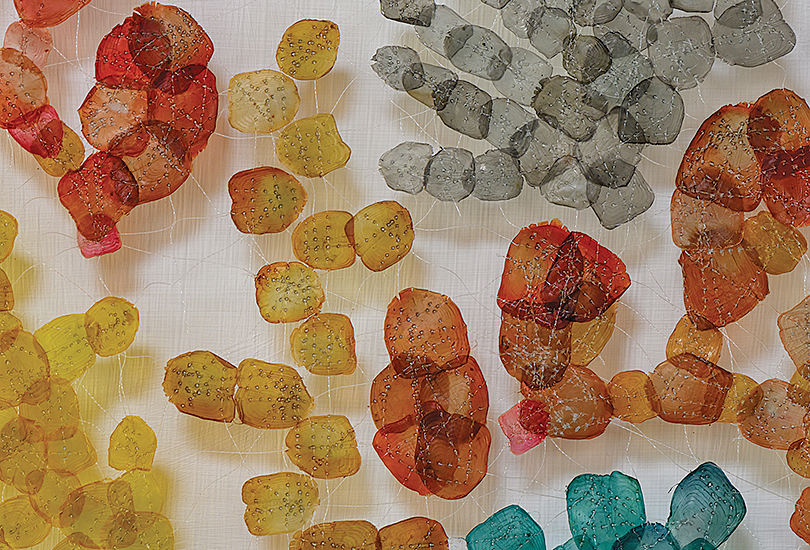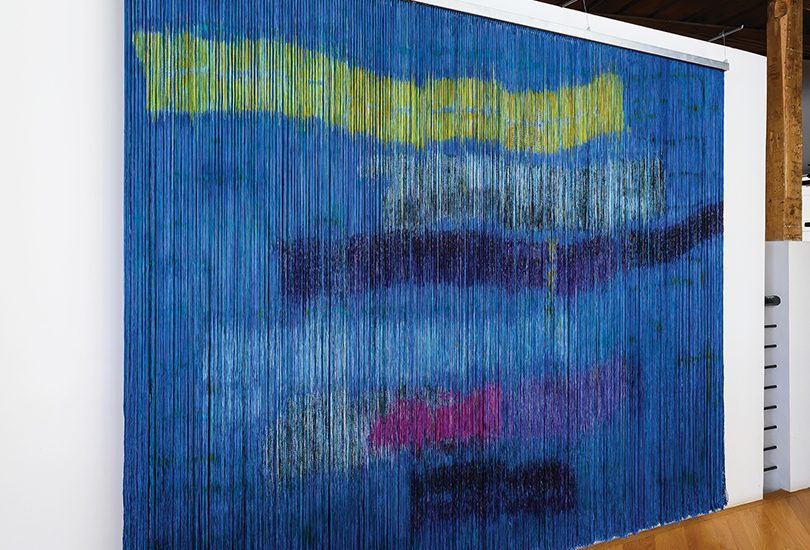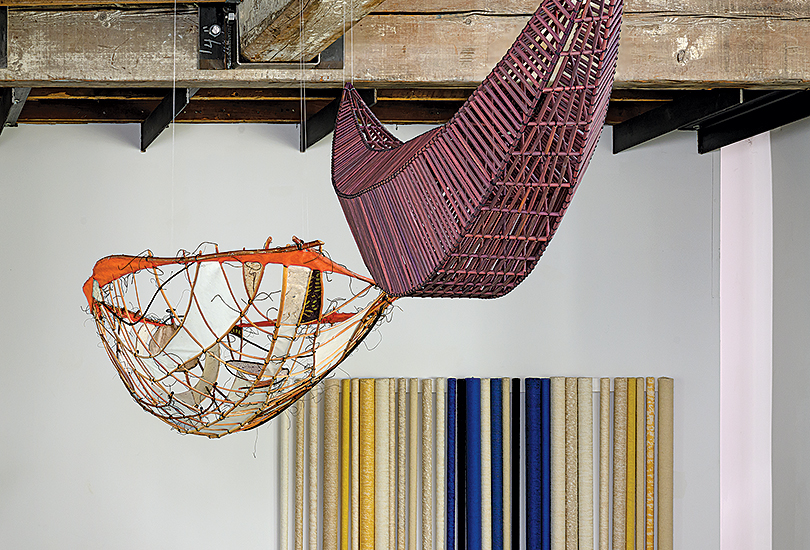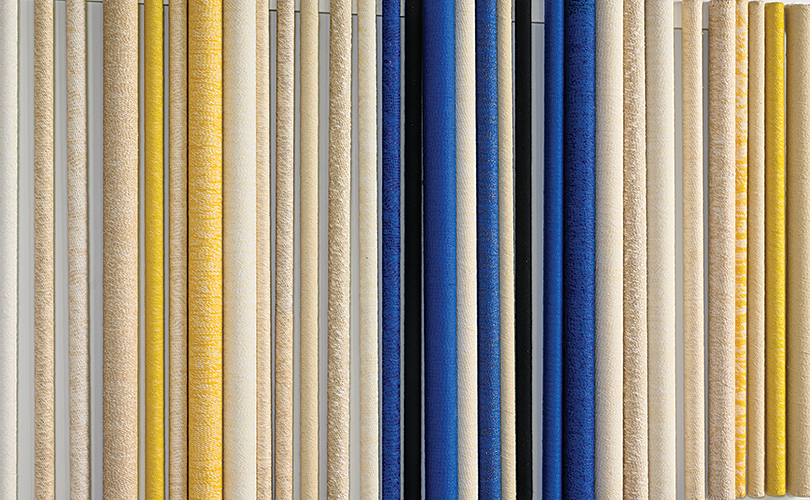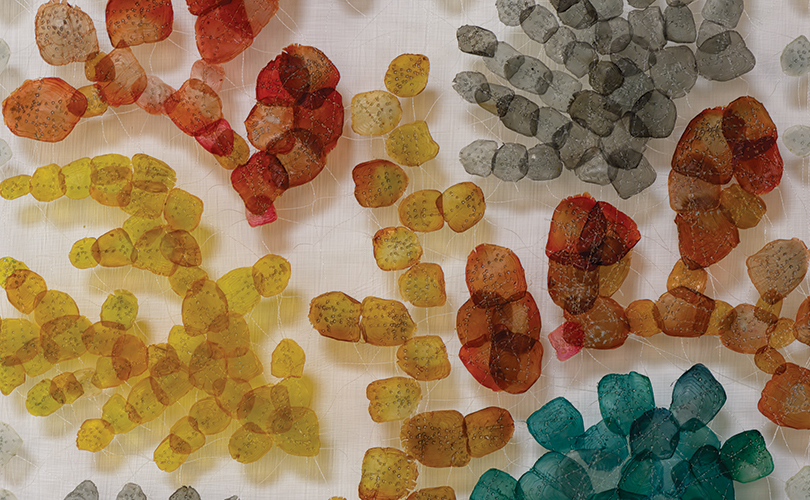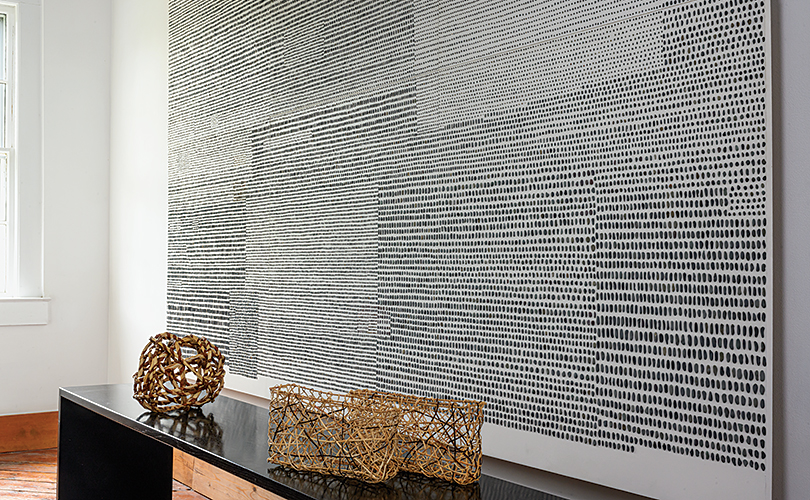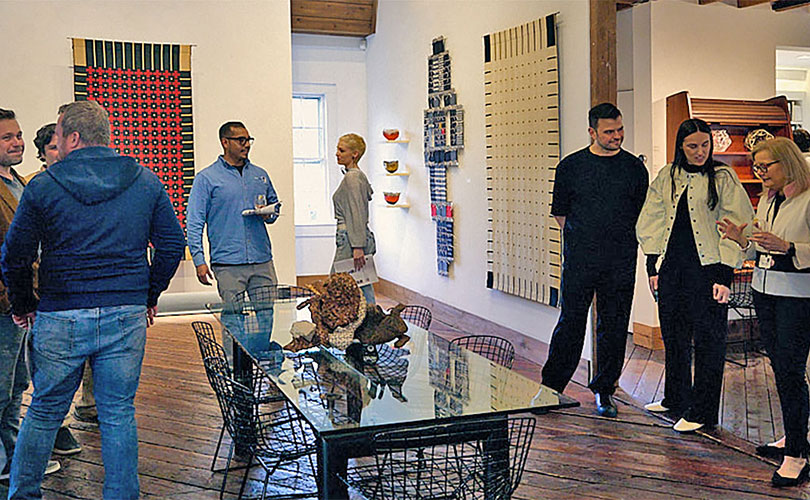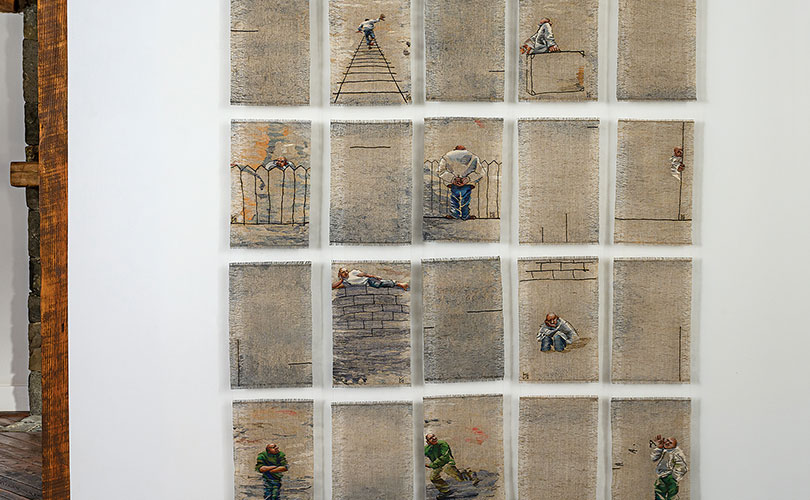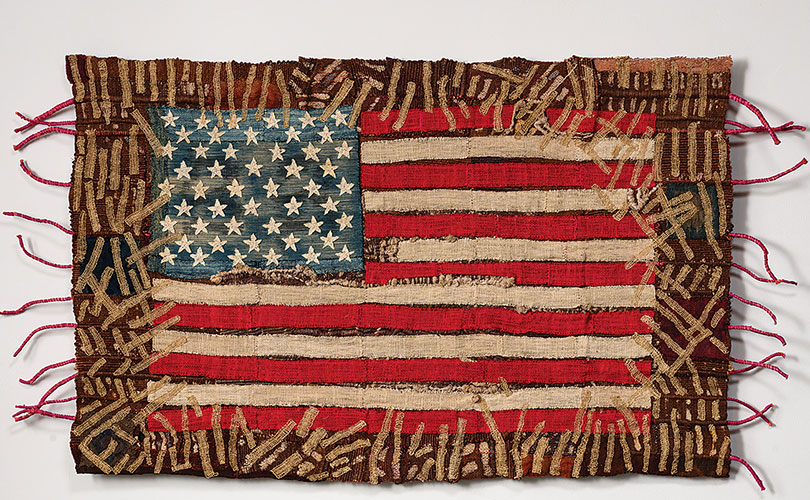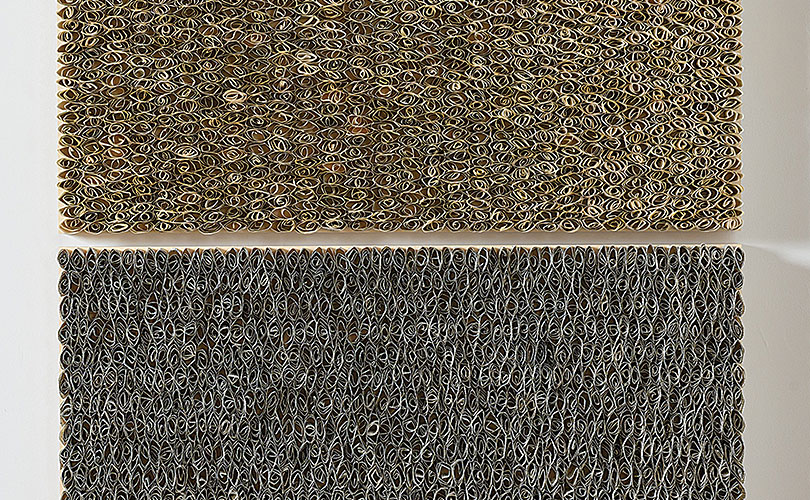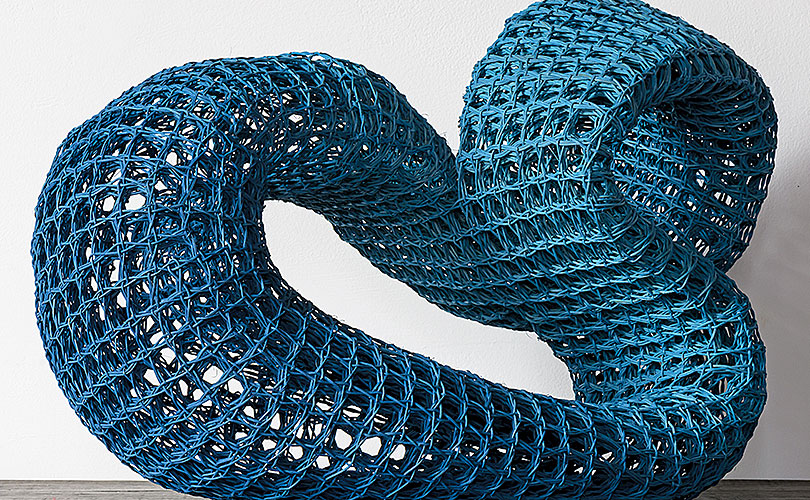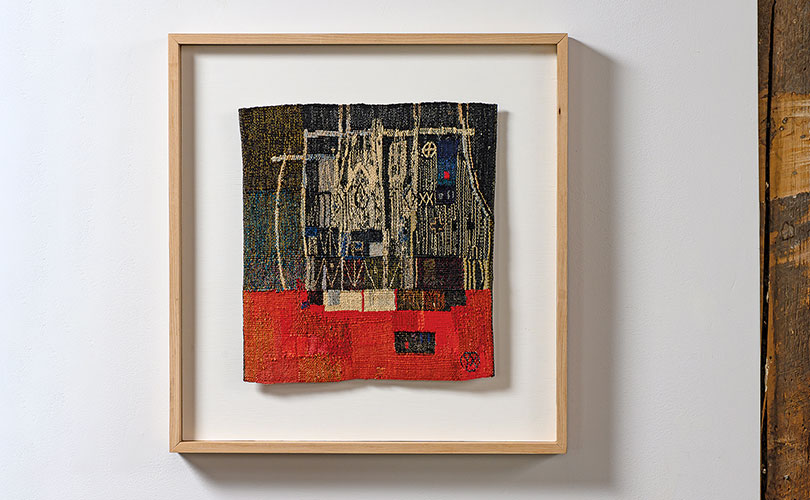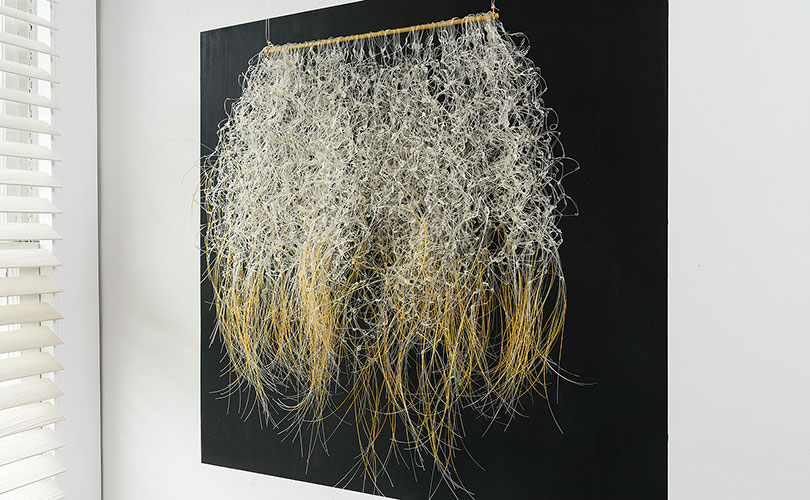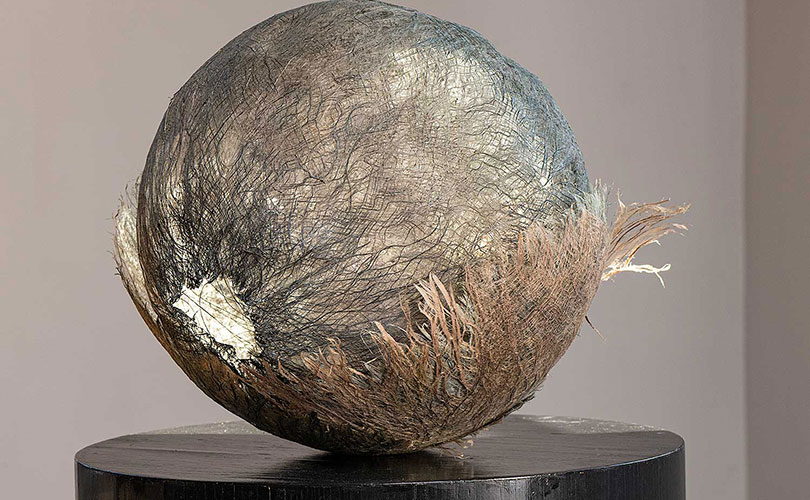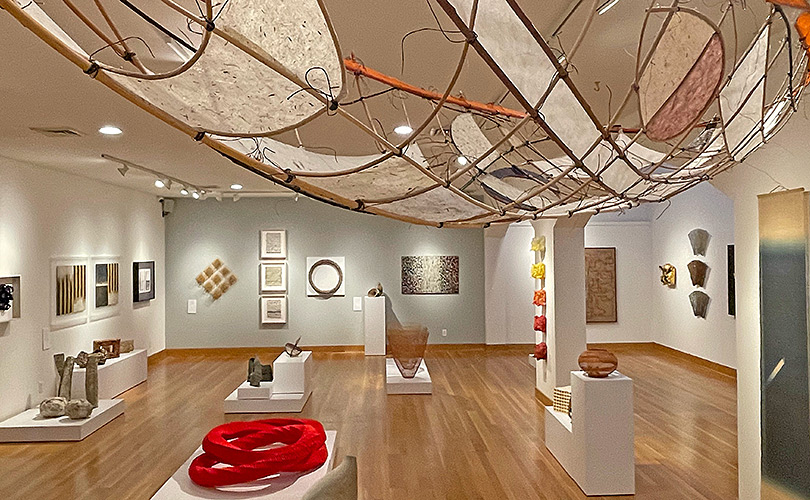
We’ve been excited by the reaction to our Japandí Revisited partnership with the Wayne Art Center in Pennsylvania. Attendance has been good to date. Tours of viewers have been scheduled including the Japan America Society of Greater Philadelphia and the American Swedish Historical Museum. There are 10 more days to see the exhibition and the two of us (Tom Grotta and Rhonda Brown) will be at Wayne on January 25, 2025 for the closing reception from 1 pm to 4 pm.
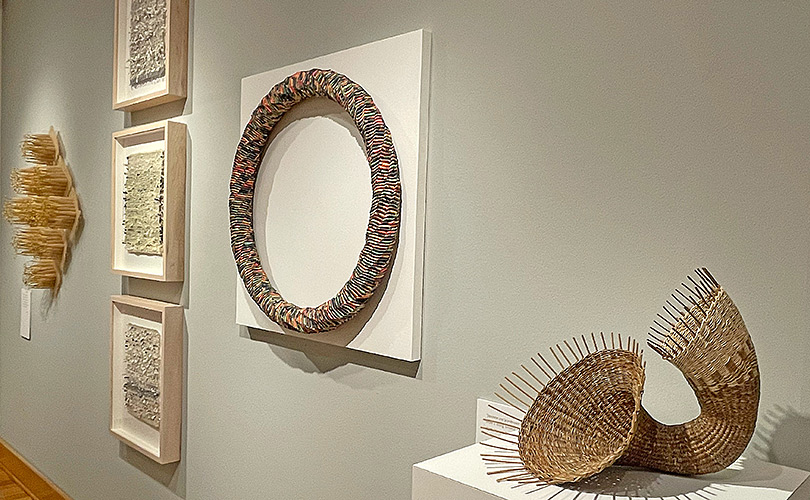
The Ethel Sergeant Clark Smith Gallery, where Japandí Revisited is installed, is airy and full of indirect light. In the exhibition we’ve had the opportunity to place Japanese and Scandinavian works side by side, so viewers can see the affinities for themselves. Flowers by Keiji Nio (JP) is hung next to Kari Lønning’s (NO) work Horn. In an imaginative merger of technology and tradition, Nio takes photographs, silkscreens the images on ribbons that he braids using Japanese technique kumihimo. In Horn, Lønning works with akebia, a vine found in the Northeast US. Horn is the largest work that Lønning has created from akebia.
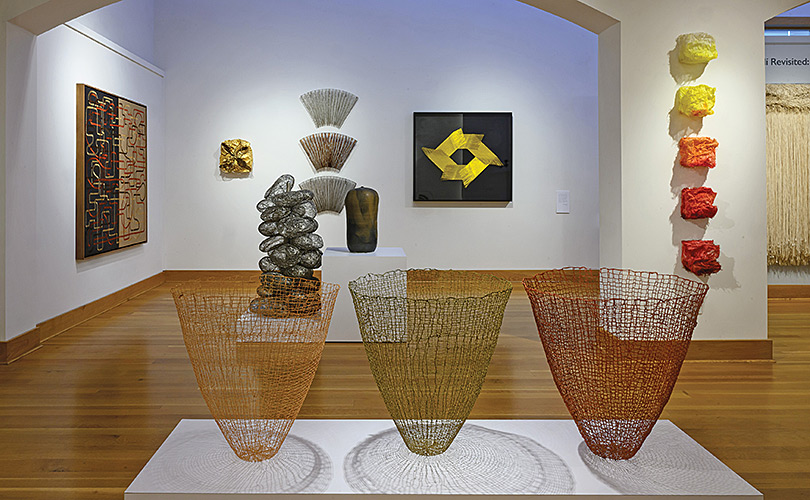
Agneta Hobin’s Clair de Lune (FI) fans made of steel and mica are displayed next to Oh! Precious by Hirohito Sato-Pijanowski (JP/US)i. Pijanowski’s work is made of glued paper cord. Both works use unusual materials — mica and paper cord — to create shine. Both reflect the exquisite craftsmanship that is another element of Japandí design.
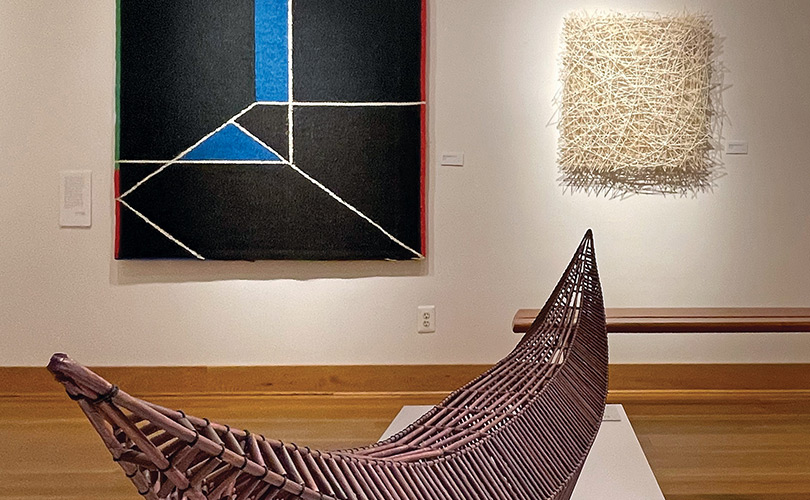
On another wall is Gudrun Pagter’s (DK) abstract, Framed, of wool, hangs beside Masakazu Kobayashi’s (JP) Bow White of layered silk and aluminum bows, each illustrating a preference for neutrals and primary colors, clean lines, and minimal ornamentation that are a third element of Japandí style.
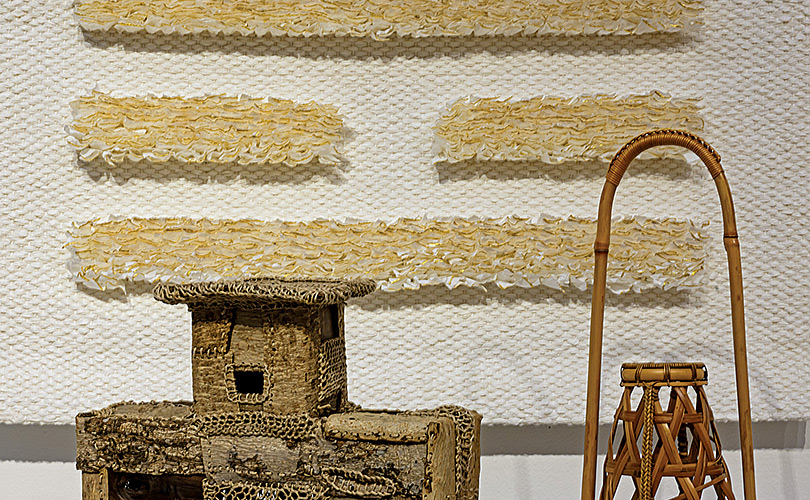
Eva Vargo’s (SE) Book of Changes and Toshio Sekiji’s (JP) Counterpoint 8 appear on the same wall. In another spot in the gallery, appears Helena Hernmarck’s (SE/US), Shredded Memories series, in which strips of letters by her mother are incorporated into weavings. Each of these works transforms used paper into art. Each repurposes materials and, central to these cultures’ approaches, each reflects respect for old and cherished items.
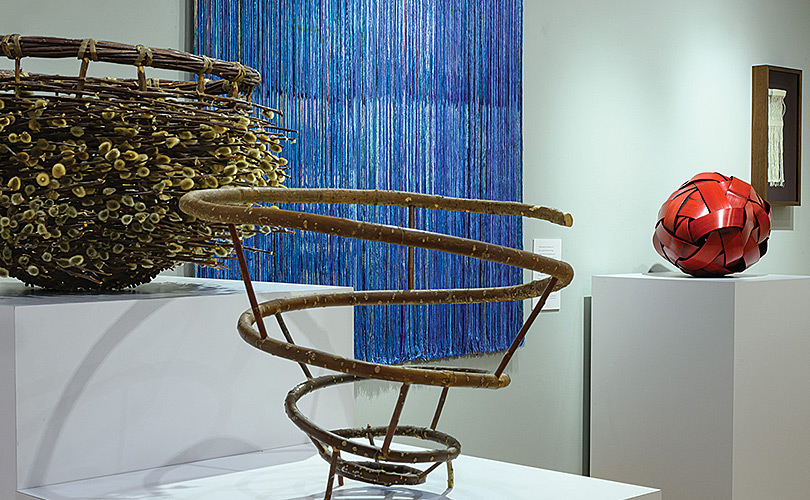
Appreciation for natural materials is the fifth element attributed to Japandí style. The exhibition combines baskets of multiple materials made by artists from several countries. Bamboo, jasmine, walnut and cedar baskets by Hisako Sekijima join ramie works by Noriko Takamiya, and works of jute by Naoko Serino of Japan. Works of handmade paper and twigs by Jane Balsgaard of Denmark are shown as are works of willow with catkins still attached and crowberry root by Markku Kosonen of Finland.
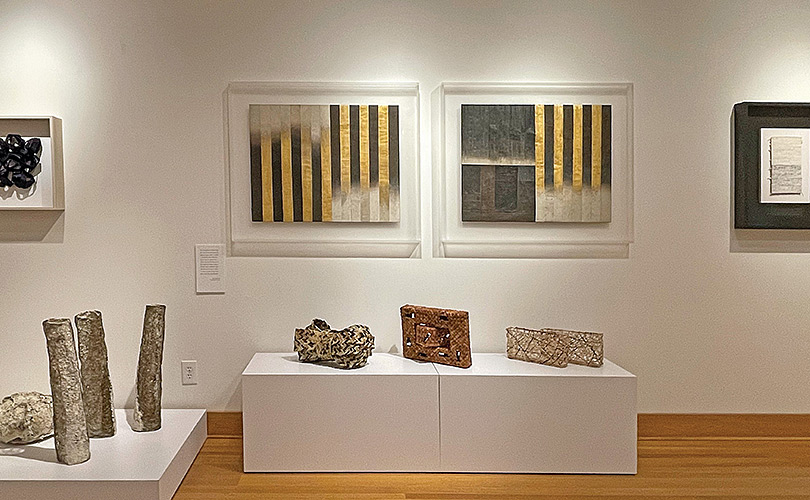
Hope you get a chance to visit Japandí.
Details through January 25th:
Japandí Revisited: shared aesthetics and influences
Wayne Art Center
413 Maplewood Avenue
Wayne, PA 19087
Dates:
Through January 25, 2025
Events:
Curator’s Talk:
Saturday, January 25, 1:00 – 2:00 pm
Closing Reception:
Saturday, January 25 | 2:00 pm – 4:00 pm
Gallery Hours:
January 2025 (free admission)
Monday 9:00 am – 5:00 pm
Tuesday 9:00 am – 5:00 pm
Wednesday 9:00 am – 5:00 pm
Thursday 9:00 am – 5:00 pm
Friday 9:00 am – 5:00 pm
Saturday 9:00 am – 4:00 pm
Sunday Closed
Also on exhibit at the Wayne Art Center is Craftforms, an international juried exhibition of contemporary fine craft.






